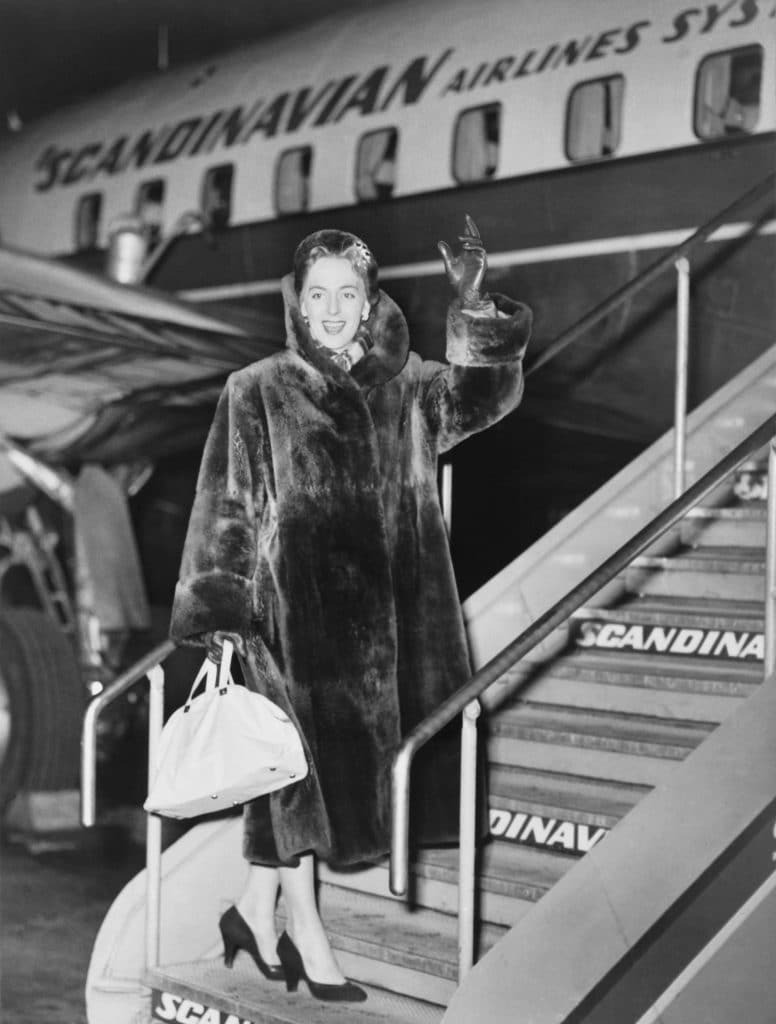A while ago, I found a video clip of a newsreel from the 50’s while scrolling on Instagram. It was in black and white, with a transatlantic-accented reporter telling the audience about a very stylish woman returning to the United States after receiving gender affirming care abroad. I was so intrigued by discovering a piece of LGBTQ+ history I had never heard before that I had to know more. And now, dear
readers, I want to share it with you.
Christine Jorgensen was a trans woman born in 1926. She was assigned male at birth, but knew from a young age that she was different from the boys around her. She recalled asking her mother when she was young, “Why didn’t God make us alike?” She was also attracted to men, and struggled to understand these feelings in her youth.
She served in the army as a clerical worker until 1946, volunteering after she graduated high school despite the risk that being perceived as a gay man in the army at the time could have resulted in dishonorable discharge, potential imprisonment, or institutionalization. When her service concluded, she pursued a career in photography, and began to research what options existed for people whose gender identity and sexual orientation fell outside the norm. In 1950, she travelled to Denmark to enlist the help of Dr. Christian Hamburger, an endocrinologist who recommended a series of hormonal and surgical treatments to affirm her gender identity. She named herself in his honour.
But her life was thrust into the spotlight when a letter she sent to a loved one regarding her transition was leaked to the press, and the New York Daily News ran an article, “Ex-GI Becomes Blonde Beauty: Operations Transform Bronx Youth.” A newsreel recorded her return to the states, where she was met with reporters' questions. Despite facing public scrutiny for her private life, Jorgenson handled the
attention with admirable courage, and took the opportunity to control the narrative about her own life.
What is interesting to me from a modern perspective is that the initial media reaction was largely curiosity. The American public was fascinated by the medical advancements that her story represented, as well as the idea of a former military service member turned “all-American beauty.” The reporter in the newsreel used Christine’s correct name and pronouns, and spoke with eager interest, rather than disapproval. Eventually, the attention turned more hostile, with many scrutinizing her medical treatments and identity, and she faced significant challenges. Because her birth certificate identified her as male, she was never able to get married despite being engaged twice.
However, Jorgenson used the public attention to launch a career as an entertainer and nightclub performer. She went on to be a University lecturer, activist, and mental health advocate, wrote an autobiography in 1967, and was the topic of a documentary in 1970. She fought for the societal inclusion of LGBTQ+ people, stating in her book that the answer “must not lie in sleeping pills and suicides that look like accidents, or in jail sentences, but rather in life and the freedom to live it.”
Citations
Witzenburg, Frankie. “Christine Jorgensen: America’s First Transgender Celebrity.” National Archives. March 26, 2024.
https://unwritten-record.blogs.archives.gov/2024/03/26/christine-jorgensen-americas-first-transgender-celebrity/
“Life Story: Christine Jorgensen (1926-1989).” The New York Historical.
https://wams.nyhistory.org/growth-and-turmoil/cold-war-beginnings/christine-jorgensen/#
